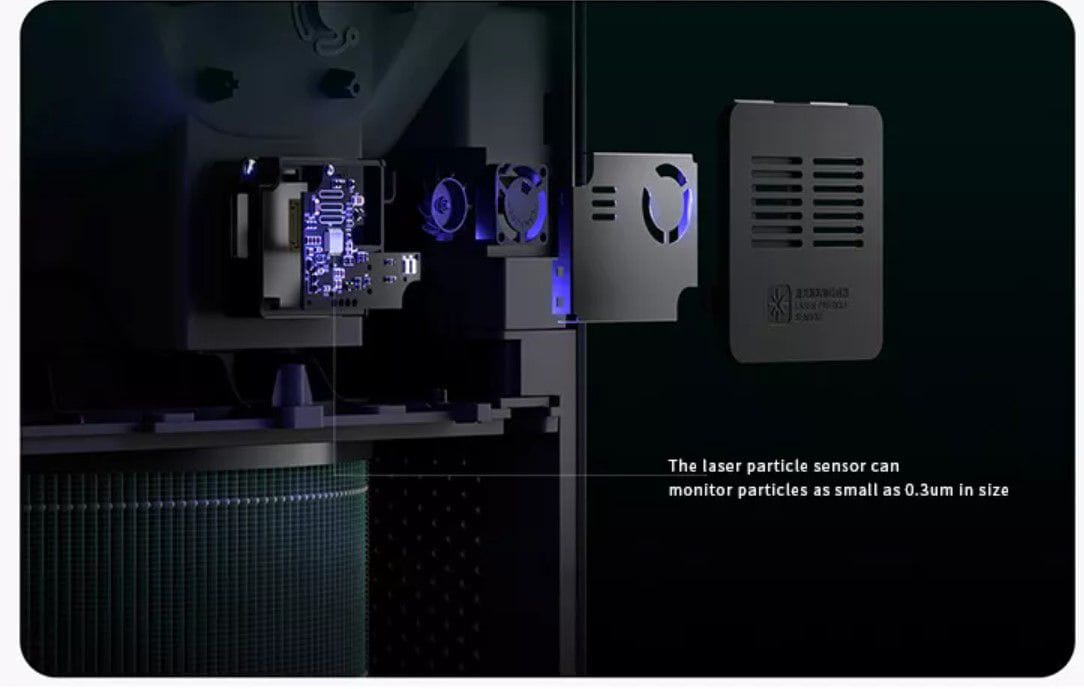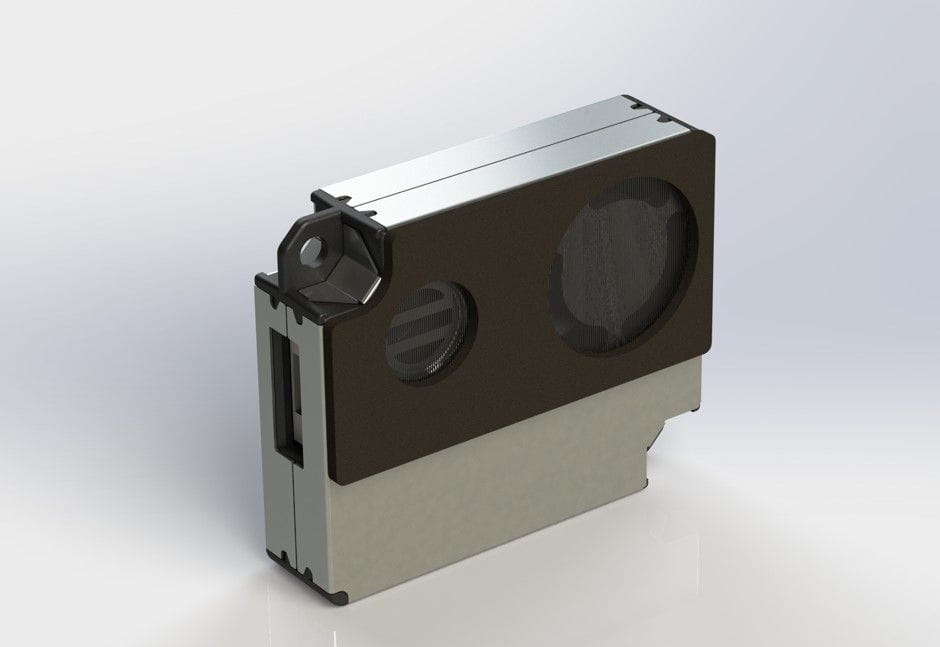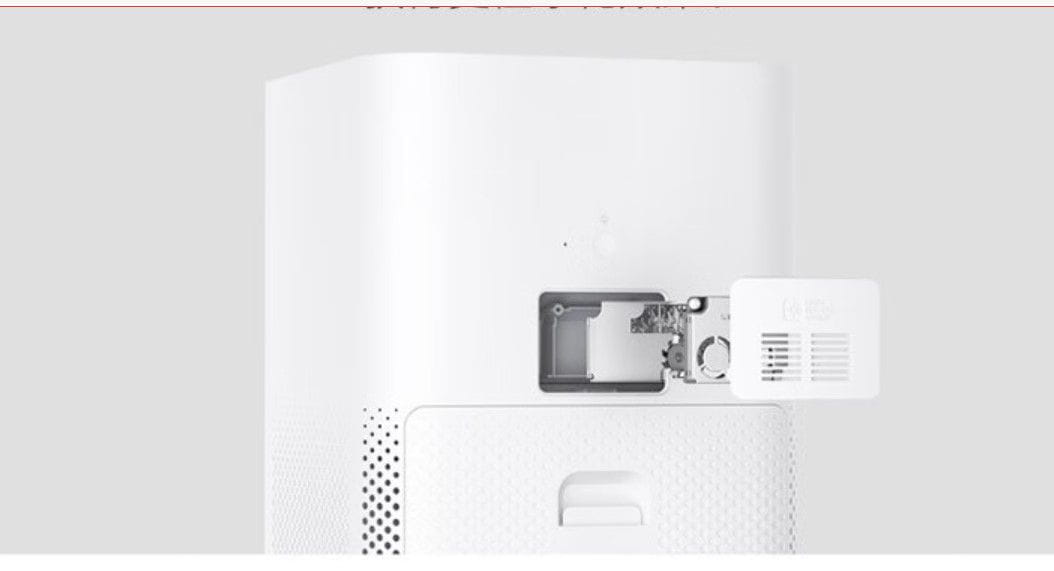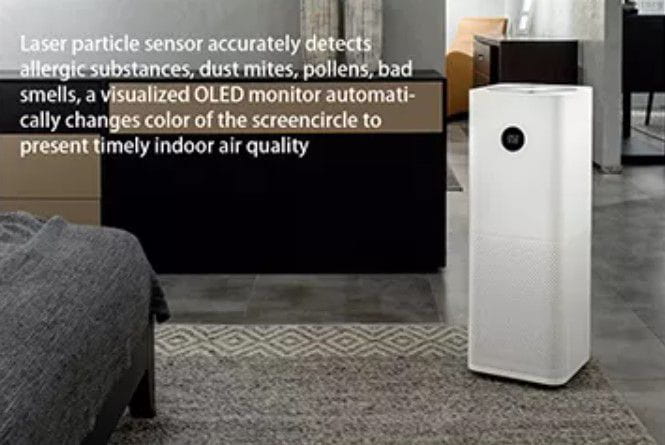Laser Dust Sensors
A laser particle sensor probe is about 0.3 ㎛ particles, such as indoor dust, pollen, microorganism, dust mites, and cigarette smoke, measuring the concentration of suspended particles does not exceed 30 m³ space.
The signal of the laser particle sensor is converted to PWM output by the internal circuit and MCU program. In addition, the sensor's filter circuit and MCU program can remove noise to make the device work more stably when there is noise in the signal.
The sensor is suitable for indoor automatic air monitoring systems, such as air purifiers.
The configuration of the laser particle sensor:

Laser particle sensor photo:

Laser particle sensor's application in an air purifier for indoor air quality detection:

Laser particle sensor accurately detects allergic substances, dust mites, pollens, and bad smells, a visualized OLED monitor automatically changes the color of the screen circle to present timely indoor air quality:

PM2.5 exceeds the standard and air pollution is serious:

High-precision laser sensor, real-time monitoring for immediate feedback, sensitive monitoring of pollution changes, high efficiency.

-
Laser PM2.5 Air Quality Sensor with Compact Structure
Laser PM2.5 Sensor Factory: Laser PM2.5 Air Quality Sensors, Low Power Consumption, Compact Structure, DC 5±0.5V, Ripple<50mV, MTTF≥30000 Hours.
-
Laser Type PM Sensor, High Accuracy, Fast Response
Laser Type PM Sensor Manufacturer: High Accuracy Laser PM Sensors, Synchronous PM1.0, PM2.5, PM10, BSP Detection, Fast Response, TTL Serial Port Output.
-
PM1.0, PM2.5, PM10, BSP Laser Dust Sensor
Laser Dust Sensor Supplier: PM1.0, PM2.5, PM10, BSP Laser Dust Detectors, UART TTL Data Interface, 0-90% RH Working & Storage Humidity, for Air Purifier.
-
High-precision Laser Particle Sensor, Anti-interference
Laser Particle Sensor Provider: Laser-based Particle Sensors, Anti-interference, High Precision, -15-60℃ Working Temperature, -30-70℃ Storage Temperature.
-
Outdoor Laser Dust PM2.5 Detector
We Provide Outdoor Laser Dust PM2.5 Detectors, Professional Manufacturing Outdoor Laser PM2.5 Sensors, PM2.5, 24g, Working Current ≤ 80 mA, DC 5±0.5V.
-
Easy Installation PM2.5 Laser Particle Sensor
We Provide Easy Installation PM2.5 Laser Particle Sensors, High-Precision Laser PM2.5 Particle Sensors, Humidity 0-90% RH, 26g, PM2.5, 0-1000 ug/m3.
-
Direct Selling PM2.5 Laser Particle Sensor
We Provide PM2.5 Sensors, Direct Selling PM2.5 Laser Particle Sensors, 0-1000 ug/m3, 0-90% RH, UART TTL, 9600 bps, Weight 26 g.
-
Laser PM2.5 Particle Detector
We Provide Laser PM2.5 Particle Detectors, PM2.5 Particles Laser Detectors, of 26g, DC 5±0.5V, Ripple < 50mV, UART TTL, 9600 bps.
-
Laser Dust Sensor PM10 Monitor
We Provide Laser Dust Sensor PM10 Monitors, Environmental Monitoring Anti-interference Capability Laser Particle Sensor PM10 Monitors, of 26g, UART TTL.
-
High-Precision PM2.5 Laser Dust Sensor
We Provide High-Precision PM2.5 Laser Sensors, Professional Laser PM2.5 Sensors For Sale, DC 5±0.5V, 1000 ug/m3, 24g, Working condition Temp -15℃-60℃.
-
Indoor And Outdoor Air Tiny Particles Detector, PM2.5
We Provide Tiny Particles Detectors, Indoor And Outdoor Digital Laser Dust Sensors for Tiny Particles, 24g, UART 9600 BPS, Working current ≤ 80 mA.
-
Outdoor Anti-interference PM2.5 Particle Sensor Module
We Provide Outdoor Particle Sensors, High Precision Outdoor Laser PM2.5 Particle Sensor modules, 1000ug/m3, UART 9600 BPS, 24g.
The sensor uses a laser LED as the light source. When the light beam shoots to the fine particulate matter in the air, the laser will be scattered. And the built-in photodetector will collect the scattered light, with the current signal being generated by using the photoelectric effect. After the circuit is amplified and processed, the concentration of PM can be obtained. Finally, it is converted into mass concentration by microprocessor based on the Mie theory (MIE), and output in the form of the digital interface.
Laser dust sensors are mainly used in the field of PM2.5 detection to quantify the quality of PM2.5 with precision, and can be embedded in various devices, such as household (vehicle, handheld) air detectors, air purifiers and other equipment for environmental improvement. In addition, these products are also applied in the areas of Internet of Things data acquisition, environmental quality testing and so on.
Laser-type PM sensors emit laser with fixed wavelength. Because the laser can be focused into a very concentrated parallel beam, and maintain a small diffusion angle and a high power density over a long distance, this sensor features strong focusing capability and coherence, good monochrome performance and high power density. And compared with other sensors (such as an infrared type), it has obvious advantages in detection accuracy, sensitivity and consistency. Laser dust sensors can detect particles as small as 0.3μm and have excellent anti-interference ability. And they are able to finish real-time data collection and detection, effectively dealing with different scenarios and complex environments. Built-in high-performance lasers and photoelectric receivers ensure the accuracy and consistency of data.













